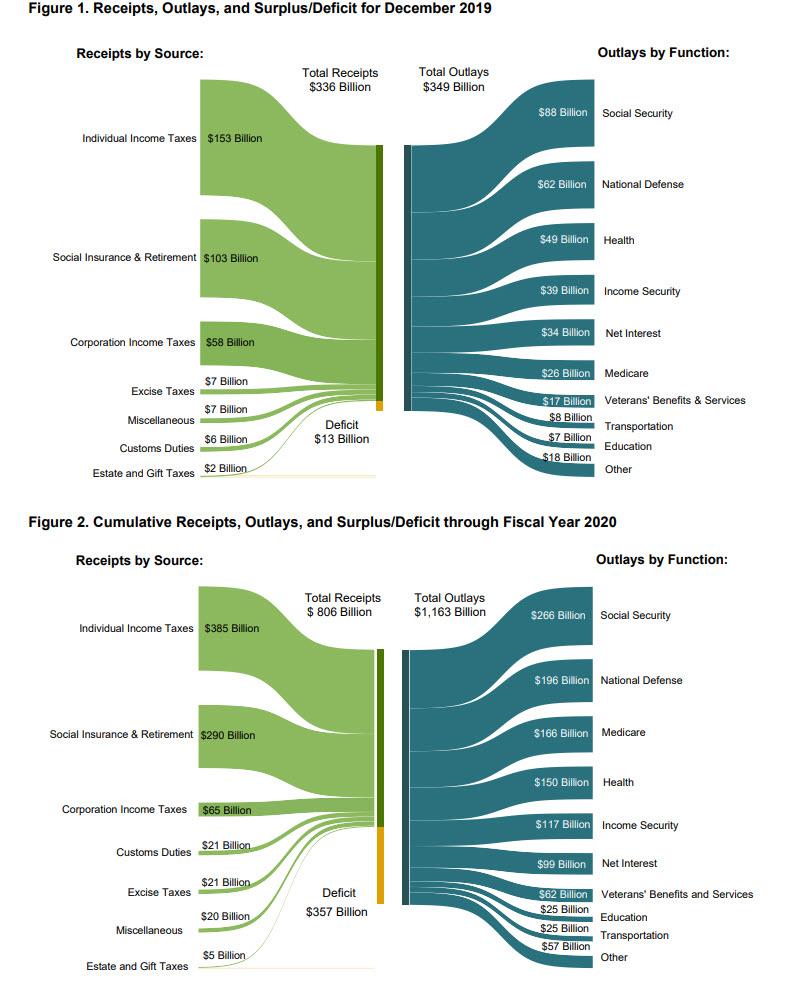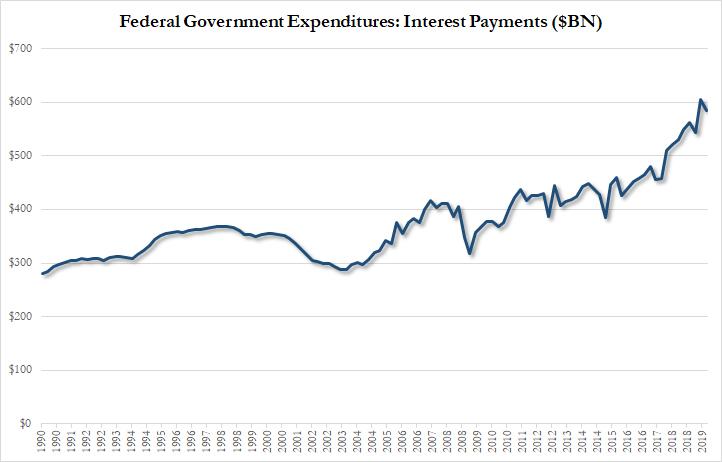US Budget Deficit Blows Out To Nine Year High In First Quarter Of Fiscal 2020
The gaping US budget deficit hole is getting bigger with each passing month.
Earlier today, the US Treasury announced that in December (the third month of fiscal 2020), the US spent $13.3 billion more than it pulled in, and while the month’s budget deficit was modestly better than the $15 billion expected, it was virtually unchanged from the $13.5BN deficit recorded in Dec 2018.
Total December spending of $349billion, was 7.5% higher than a year earlier, with the biggest outlays for the month as follows: social security ($88BN), national defense ($62BN), Health ($49BN), Income Security ($39BN), Net Interest ($34BN), which was more than Medicare spending for the month ($26BN) and so forth. Meanwhile, receipts increased by an almost identical amount, rising 7.4% from $312.6BN to $335.8BN, thanks to $153BN in individual income taxes, $103BN in Social insurance and retirement receipts, and $58BN in corporate income taxes.
For the first three months of fiscal 2020, total Outlays rose to $1,163BN while Receipts were a far more modest $806BN, as broken out in the chart below.
This means that the cumulative deficit for the first three months of the year has surged to $357BN.
It also means that the deficit after one quarter of fiscal 2020 is now in the history books, was the widest going back all the way to 2011, when the US was still spending like a drunken sailor under President Obama, in response to the financial crisis, and when the final deficit for the full year soared to $1.3 trillion.
And while in 2020 nobody is predicting a full-year hole as big as 2011’s, with every passing month we get closed to a number hinting that the US is spending as if it is emerging from a recession and a major economic crisis. That, or it is about to enter one. One more thing to keep in mind: if it wasn’t for $21BN in customs duties collected mostly from China as a result of the trade war tariffs, the cumulative US budget deficit through December would be even worse than that in 2011.
One final point: with US debt recently surpassing $23 trillion, it is no surprise that interest expense on this debt has also pushed to all time highs, and in the latest quarter it stabilized just shy of the prior record, dipping modestly to $585 billion, roughly double where its average for the two decade period from 1990 to 2010, at which point it soared. One can only imagine what the interest expense will be if and when rates are ever allowed to normalize.
Tyler Durden
Mon, 01/13/2020 – 17:25
via ZeroHedge News https://ift.tt/384xTHu Tyler Durden


